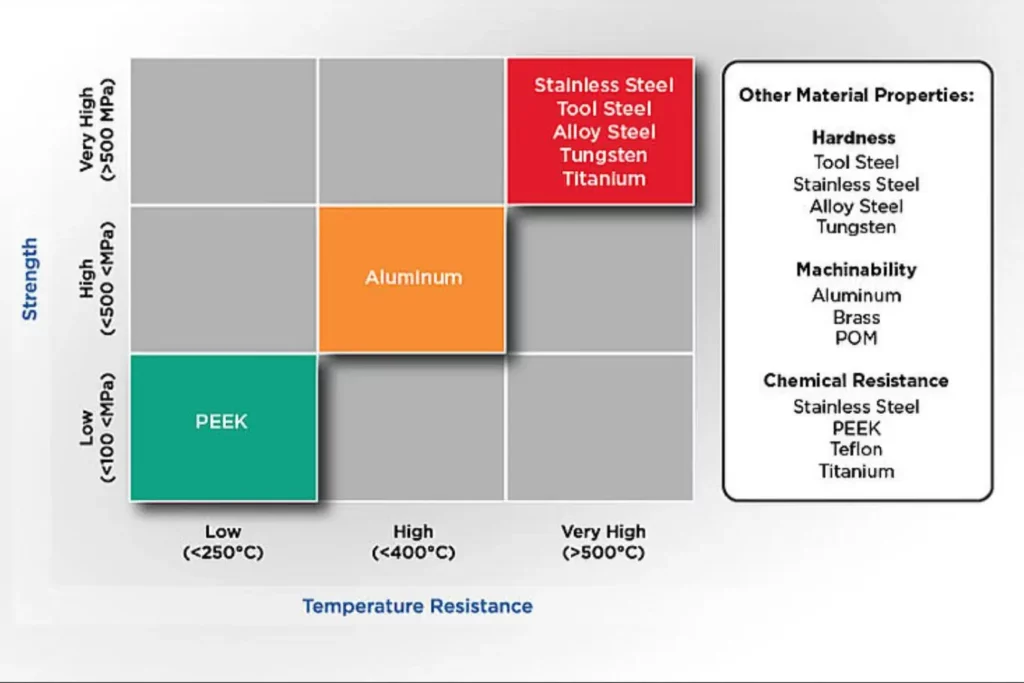The Most Commonly Used Materials in CNC machining
CNC machining has become on the most widely-used manufacturing technique in the world. This industry-standard technique is used to create many precision parts with exceptional levels of accuracy. With the aid of computer numerical software and machines, engineers can create parts with the most intricate and complex details to fit a specific function in any system.
Because of the diversity of CNC machining, the technology is compatible with a wide array of materials. However, some materials remain more difficult to machine than others. In today’s post, we take a detailed look at 7 of the most used materials in CNC machine and some of their cnc mold.
1.Aluminum
Aluminum is the most widely-used CNC machining material for a number of reasons. First, cnc mold is strong and lightweight. The consequence of this is reduced effort, production optimization and the production of end parts that are a perfect balance of strength and weight.
Aluminum is also very affordable, non-magnetic and resistant to corrosion which makes it the go-to option for applications in engineering, automobiles and aerospace industries. Its non-corrosivity also makes it an excellent choice for food containers. Aluminum can be machined to tight tolerances. It can be used as a suitable replacement for the more expensive steel by plating it with other materials for increased conductivity and strength. Working with aluminum in a machine shop can significantly boost project turn-around times as it is far easily machinable that other materials.
2.Stainless steel
Stainless steel is perhaps the most popular material for construction and engineering works. Stainless steel is preferred for a host of characteristics out of which strength and durability stand out. It Is very resistant to corrosion with good conductivity.
Stainless steel can be welded tight which makes it suitable for project that demands tight tolerances. Steel is however, relatively expensive. Depending on the grades, the cost of stainless steel will be impacted on the ease of machining and availability. This type of steel is resistant to stain and rust, hence, the name stainless. This makes it very suitable for medical and surgical applications.
3.Brass
Brass is widely favored for its cost-effectiveness and ease of machining. It is applied in the production of medical equipment electronics, consumer goods, contact materials and commercial parts due to its smoothness and sophistication. Brass can be used to produce parts with complex features and cast parts. It is however, unsuitable for vacuum applications.
4.Titanium
Once paraded as the strongest metal on earth, titanium is widely used in CNC machining for making parts that require high-strength, durability and stability. It is impervious to heat and rust, brine, water and corrosion. This makes is an excellent choice for manufacturing aircraft components. Its bio-compatibility makes it ideal for medical implant devices.
Titanium is inert, meaning it is far less reactive with other surrounding components. The drawbacks of this material, however, lies in its expensive price and difficulty in machining.
5.Magnesium
Magnesium is a lightweight structural metal employed in a number of precision machining procedures. It delivers toughness and strength across numerous applications. It is also almost as easily machinable as aluminum. Magnesium allow have good corrosion resistance and temperature conductivity.
6.Copper
Copper is another metal used in precision machining for its versatility. Parts made from copper will boast of higher levels of electrical conductivity, strength and corrosion resistance. Copper is not as great as aluminum when it comes to tolerances, however, its electrical conductivity is only bettered by silver. It is widely available and relatively more affordable to machine.
7.Plastics
Plastics are also used for machining a wide array of products because of their relative affordability, non-conductive and inert properties. Plastics are excellent on their own for making parts for medical, scientific, industrial and consumer uses. They may also be engineered for more strength and durability when they are to be used for parts that have high-strength demands.
Plastics are useful as semiconductors, food containers and non-reactive, low-heat end uses. They are very easily machined and available in numerous types and grades.
Before we conclude
Just before we get into these materials, it is important to understand the essential factors that may affect the material you select for your CNC manufacturing process. Choosing the right material is essentially dependent on:
• The material availability
• The ease of machining the selected material
• How the end part is to be used
• The cost of the material and how it impacts the cost of the final product
• The material characteristics that will affect its functionality
• The dimensional tolerance and stability
• Physical and chemical properties related to thermodynamics, rust or corrosion-resistance.
Material selection, often, is the difference between mediocre and optimal products. Since the material is the starting point for manufacturing, picking the best option for your product function is inarguably one of the most important steps in product manufacturing. Firstpart provides free quote and assessment for all your projects and intended materials to help you cut starting costs and ensure that your choices are optimal for your end products. Click here to talk to us today and learn about multiple materials available for use with your project as well as all of our manufacturing techniques available to deliver precision parts for your needs today.










